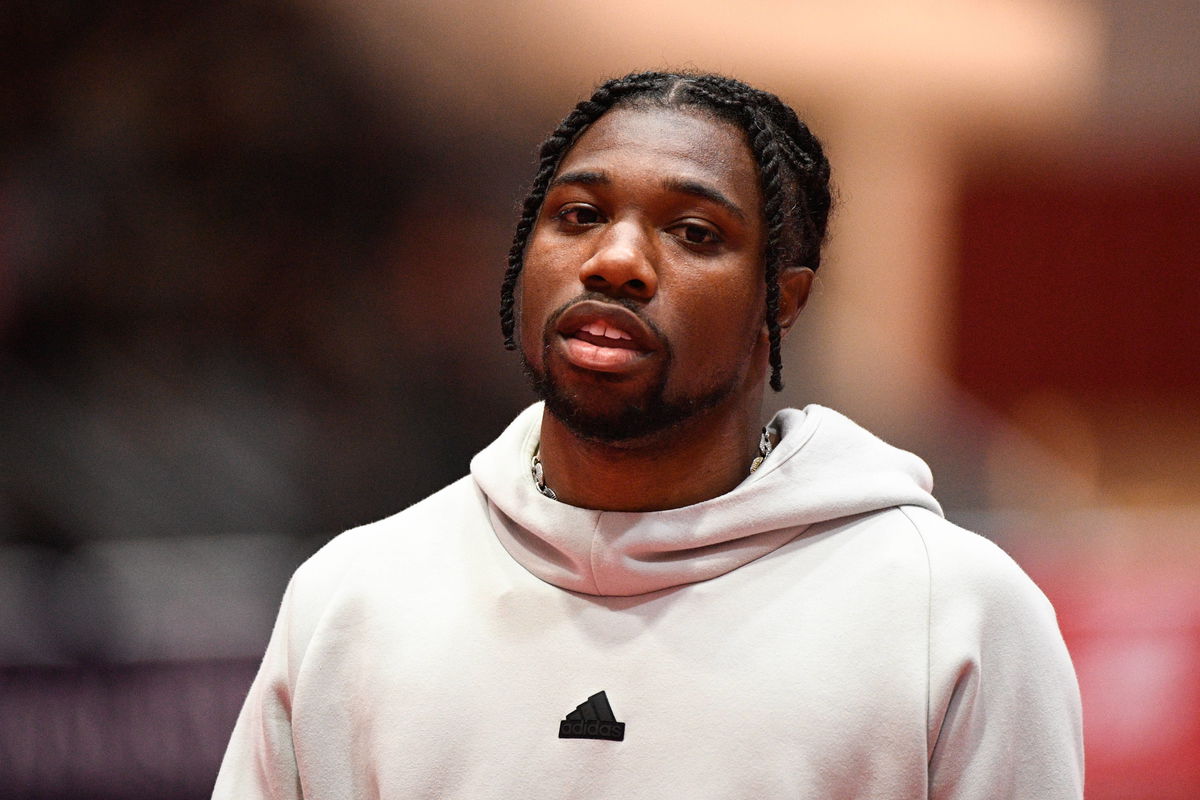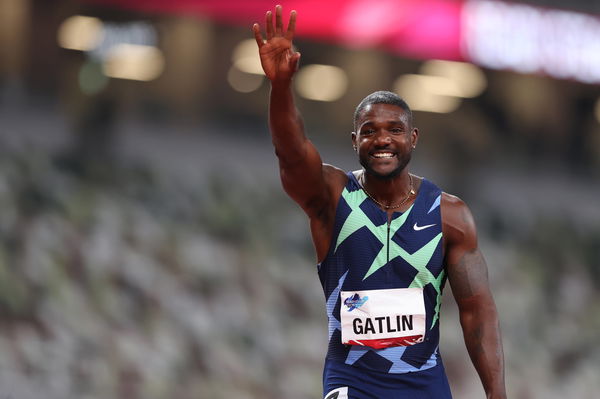
Imago
BOSTON, MA – FEBRUARY 02: Noah Lyles of the United States looks on during warmups before the mens 60m in the New Balance Indoor Grand Prix on February 2, 2025, at the TRACK at new balance in Boston, MA. Photo by Erica Denhoff/Icon Sportswire TRACK & FIELD: FEB 02 New Balance Indoor Grand Prix EDITORIAL USE ONLY Icon25020299

Imago
BOSTON, MA – FEBRUARY 02: Noah Lyles of the United States looks on during warmups before the mens 60m in the New Balance Indoor Grand Prix on February 2, 2025, at the TRACK at new balance in Boston, MA. Photo by Erica Denhoff/Icon Sportswire TRACK & FIELD: FEB 02 New Balance Indoor Grand Prix EDITORIAL USE ONLY Icon25020299
The inaugural Grand Slam Track meet in Kingston, Jamaica, didn’t go as planned. Close your eyes and imagine the legends like Gabby Thomas, Sydney McLaughlin-Levrone, and Vernon Norwood showing their mettle at what was promised to be one of the most exciting events in track, in front of… Well, not a lot of people. The lack of spectators at Kingston put a huge question mark over the event’s appeal, and it did not take long for the likes of Noah Lyles and Rai Benjamin to come out with their arguments on why the event didn’t work out the way it had been promised. Yet, Michael Johnson was confident that things would work out. “Obviously, look, let’s be honest. We would love to see more spectators here, you know”? Johnson said after the first GST event. “We think we’ll get that. We think that’ll happen. But the crowd was engaged, and that’s what’s important. People were engaged with what’s happening here.”
Watch What’s Trending Now!
And make no mistake, the Miami leg, spanning over May 2-5, was an excellent chance for the event to wipe out the low-attendance curse. And for a moment, visuals of the packed Ansin Sports Complex did make it seem like Johnson’s optimism wasn’t misguided. But the math told a different story. That’s because the stadium in Miramar, Florida, can only accommodate a little over 5,000 spectators.
So even if it was packed to the brim, it still couldn’t hold a candle to the 8,000 people who turned up to see the first leg at the 35,000-capacity National Stadium in Kingston. So, if a change in locations wasn’t the solution, could it be that Johnson’s Grand Slam Track is simply not interesting enough? Well, that’s not what Justin Gatlin thinks. In a recent episode of the Ready Set Go podcast, the legendary sprinter explained why he is a big fan of Michael Johnson’s event.
ADVERTISEMENT
“
I love the Grand Slam Track concept because it has so many layers to it, right? I mean, you look at Masai (Russell) breaking the American record. But then at the same time, Ackera Nugent wins the 100K because now you’re taking away the fact that it’s not just about you being fast.” Gatlin continued appreciating what the new league brings to the table unfiltered. “It’s about you being strategic. Because you’re running the 100 hurdles and you’re running the 100, where’s your placement going to be, you know?”
On May 2, Ackera Nugent could only manage third place in the 100m hurdles, which is the event she excels at. However, the next day she not only finished first in the 100m flat but also matched her personal best of 11.09 seconds. Her overall scores added up to 18 and were enough to give her the top position in the group standings and the $100,000 prize money.
Meanwhile, Olympic gold medalist Masai Russell could only clinch second place (17 points) despite running the 100m hurdles in 12.17 seconds—the second-fastest time ever recorded. Why? She finished fourth in the 100m flat event with a time of 11.40 seconds.
“When Masai and Tia (Jones) came across the line, all the attention was on them because they ran 12.17 and 12.19. No one was even checking for Nugent, and then that’s when I realized when the gun went off in 100 meters, and Nugent put them lemon pepper steppers on and ran and crossed that line, and the numbers start adding,” added Gatlin.As Johnson has said, the competition helps bring out
“the different skill sets of the athletes,” while attempting to close the pay gap that exists between track and other sports. And that is why Noah Lyles, despite his multi-pronged criticism of the event, wants the event to be successful. “I would love nothing more than for this to be successful, because, if it does, the amount of benefits it would provide, this could be a way for athletes to not have to only rely on World Championships, because you could potentially be making more money consistently throughout the year,” Lyles said in an episode of the Beyond The Records Podcast in March.But if the event if truly going to be successful,
the broadcasting details will have to be ironed out. They just have to make the fans a lot more engaged with the content to avoid the attendance hiccups in the future.Noah Lyles and others put the broadcasting flaws on notice for an underwhelming output
From excessive downtime to the same repetitive filler content, the GST’s TV coverage didn’t sit well with the fans. Of course, you can’t expect the world out of something so recent, but taking notes from the naysayers might open the avenue for a future breakout. Did you feel sick of the petty fluff pieces and commentary instead of the spicy action between races?
Well, you’re not alone. Noah Lyles, Grant Holloway, Rai Benjamin, and others backed you up with a pointed complaint. The legendary trio zeroed in on GST’s slow and uninspired way of broadcasting. In an episode of The Beyond The Records podcast in April, Noah Lyles explained, “So what usually happens is they would run a race. The pre-show start was 40 minutes from start time to the first gun… then they talk about the time. And then they go to commercial, and when they come back. You’re kind of just watching random video footage of anything that’s going on. Maybe a child in the audience for about 15 to 10 more minutes.”
He didn’t speak out of the blue. The less engaging elements and the stockish approach of presenting the 10-15 minute pep talk before the next star crops up can test the patience of the fans. They will lose interest, and you will know the aftermath of their feelings in the upcoming ticket counts. Olympic gold medalist Grant Holloway also doubled down. “Let’s not have this whole little talk show for about 10-15 minutes until the next event starts. Because at some point I’m over here doing practice swings with my putter and my irons, and I forget the track meet is on.”
But as Lyles and Holloway pointed out what went south for the broadcast, Rai Benjamin went a bit further and suggested a solution. “What they should do between events is provide a detailed breakdown—show what runners did right and what they did wrong in the previous race… It would make the overall broadcast more educational and engaging,” explained Benjamin. That might just work. After all, it’s a formula that most sports broadcasts follow. And if it has worked for them, maybe there’s a chance it’ll work for GST as well. We’ll see.
ADVERTISEMENT
ADVERTISEMENT
ADVERTISEMENT
ADVERTISEMENT

